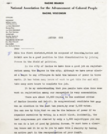
A letter about the importance of voter registation of African American voters in the upcoming election from 1957.
- Subject:
- Civics and Government
- Social Studies
- Material Type:
- Primary Source
- Author:
- Nicholas Schueller
- Date Added:
- 06/20/2022

A letter about the importance of voter registation of African American voters in the upcoming election from 1957.
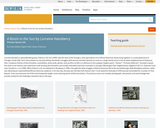
This collection uses primary sources to explore Lorraine Hansberry's play, A Raisin in the Sun. Digital Public Library of America Primary Source Sets are designed to help students develop their critical thinking skills and draw diverse material from libraries, archives, and museums across the United States. Each set includes an overview, ten to fifteen primary sources, links to related resources, and a teaching guide. These sets were created and reviewed by the teachers on the DPLA's Education Advisory Committee.
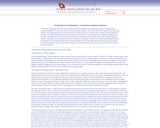
The founders of the great libraries of the 19th century were often ambivalent about whether their goal was to disseminate or conserve knowledge. They were also uncertain about the intended audience. John Cotton Dana of the Newark Public Library was atypical in his populist stance that "it is a proper function of a library to amuse." He argued that a "shallow mind" was better than an "empty one." Other librarians preferred to see themselves as cultivators of public taste and their buildings as uplifting houses of culture. The stuffiness and remoteness of late nineteenth-century libraries provoked satires such as this imaginary dialogue between a bartender (Mr. Dooley) and customer (Mr. Hennessy) in an Irish pub. Humorist Peter Finley Dunne published the piece in Dissertations by Mr. Dooley in 1906. Dunne's famous dialogues drew upon prevalent ethnic stereotypes that were a staple of late nineteenth-century humor. Dunne set his exchanges in an Irish bar, but other humorists of this era drew on German, Jewish, and black caricatures.
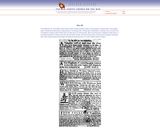
The September 18, 1762 edition of the South Carolina Gazette included notices of stray animals, runaway wives, and escaped slaves. Along with breaking tools, feigning illness, and slowing work, running away, individually or in groups, was a common form of resistance to slavery. Most of those who ran away did so for short periods, often to visit spouses or relatives on other farms, or to escape punishment. Chances were slim for permanent escape, and most of those who ran away were eventually reenslaved. Still, some escaped slaves found refuge with Native American groups or in small, isolated maroon colonies.
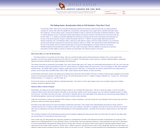
From the late 1920s, when the first rival radio broadcasting networks were formed, until the present day, as network television competes for viewers with cable and satellite fare, broadcasters and advertisers have sought ways to quantify information about their audiences. The first ratings system, devised by Archibald Crossley in 1929 for the Association of National Advertisers, relied on random telephone surveys. Interviewers asked what programs and sponsors listeners remembered from the previous day. By the late 1930s, C. E. Hooper successfully challenged this method by surveying only the shows respondents were listening to at the time of the phone interview. Hooper's method dominated until the A. C. Nielsen Company began attaching Audimeters directly to television sets. The following Collier's article from 1954 offered a critique of the four ratings methods in use at that time and discussed adverse consequences caused by the industry's reliance on ratings. This assessment by author Bill Davidson and the men in the industry whom he quoted showed signs of an assumed disparagement of ordinary American housewives, identified implicitly as the predominant audience for mass media consumption. Both the reliability of housewives as part-time interviewers and their ability as viewers to maintain accurate diaries were deemed suspect in this piece.
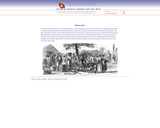
A master distributed provisions in an illustration from a weekly newspaper report on the operations of a plantation around 1860. The engraving suggested that this planter provided his slaves with a varied and nutritious diet, which was not usually the case. Slaves typically received a weekly ration of only three and a half pounds of salt pork or bacon and a quarter bushel of cornmeal. Although high in calories needed to perform heavy labor, that diet was seriously deficient nutritionally. This engraving did not show that slaves who wished to supplement their meager and boring diet had to rely on the vegetable gardens and hunting privileges some planters allowed them. Because of their unrelenting workday, slaves had to perform these tasks early in the morning or late at night.
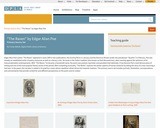
This collection uses primary sources to explore Edgar Allan Poe's "The Raven." Digital Public Library of America Primary Source Sets are designed to help students develop their critical thinking skills and draw diverse material from libraries, archives, and museums across the United States. Each set includes an overview, ten to fifteen primary sources, links to related resources, and a teaching guide. These sets were created and reviewed by the teachers on the DPLA's Education Advisory Committee.

Information about how a Girl Scouts program can give young girls the opportunity to work with NASA. Informative and can apply to many age ranges for young women!
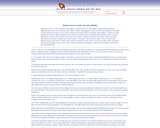
Beginning on June 17, 1942, Yank, the weekly magazine published by the U.S. Army, began its unprecedented worldwide publishing effort. Most of its 127-member staff of editors, reporters, photographers, artists, and cartoonists rotated from desk jobs in Yank 's main New York office to cover the war overseas and produce twenty-one separate weekly editions. The New York office published the American edition distributed to army camps in the United States and prepared basic material for Yank 's overseas operations in London, Sydney, Honolulu, Rome, Paris, Cairo, Tehran, Calcutta, Puerto Rico, and Panama. Sold for five cents, Yank reached a combined circulation of two million soldiers. The August 6, 1943, American edition of Yank, excerpted here, appeared twenty months after the United States entered the conflict, when the outcome of the war was still in doubt. It presented Yank 's typical miscellany of news, stories, poetry, cartoons, illustrations, photographs, notices, advice, and gripes about enlisted life in the wartime army.
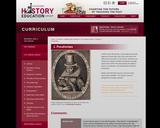
From the site: Thanks to the Disney film, most students know the legend of Pocahontas. But is the story told in the 1995 movie accurate? In this lesson, students use evidence to explore whether Pocahontas actually saved John Smith's life and practice the ability to source, corroborate, and contextualize historical documents.Please note that there are two versions of the lesson plan available. The shorter version is designed for younger students.

In this lesson on the Gulf of Tonkin incident by teacher Valerie Ziegler, students practice sourcing documents and placing them in context of other historical events. The lesson is accompanied by supporting downloadable materials and a video example.
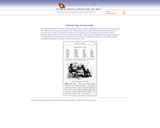
What many former slaves wanted most, both for themselves and their children, was education. With their own resources and help from northern missionary groups and the government, freedpeople built and maintained schools and hired black teachers all across the South, sometimes in places that symbolized the old oppression, such as the Savannah slave market. Northern reformers prepared textbooks for freedmen and women, which often contained more than practical lessons. Besides instructions on spelling, reading, and pronunciation, this page from The Freedman's Second Reader presented a model" black household that exhibited the gentility of the northern middle-class ideal of the family."

In the post-Reconstruction era, Southern states mobilized a vast campaign of suffrage restriction--fraud, registration laws, and literary tests--in an effort to disempower African Americans and maintain Democratic party dominance. Although these restrictions were most often directed at black voters, those that barred voting on the basis of literacy or ownership of property also affected poor whites. Many northerners supported suffrage restriction as well. Between 1889 and 1913, nine states outside the South added restrictions requiring voters to read English, and ostensible reforms like the secret ballot were often directed at pushing out foreign-born and illiterate voters. One form of voting restriction aimed specifically at African Americans was the Grandfather clause that allowed men to register to vote only if they could have voted in 1867 (before African Americans were allowed to vote in the South) or descended from an 1867 voter. This excerpt from the Louisiana law of 1898 was typical of many such restrictions. The cumulative effect of the different restriction efforts was to reduce overall voting levels by more than a third and black voting rates by almost two thirds.
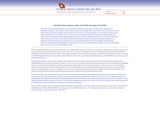
Urban reformers in the late-nineteenth and early-twentieth centuries had long pointed with horror to the unsanitary and inadequate conditions in which millions of Americans lived, particularly in large cities. But it took the severe economic crisis of the Great Depression to force the federal government to intervene directly in the housing market, and even then the response was often only half-hearted. In the 1930s, access to public housing was highly desirable, and early residents preferred their new homes, which offered bright and well-appointed alternatives to their previous substandard residences. The sharpest criticisms of public housing, however, came from builders and realtors who feared competition and argued that public housing was too appealing and would decrease home ownership. The most influential of the anti-public housing lobbies was the National Association of Real Estate Boards (NAREB). In this 1935 report to the board, NAREB president Walter S. Schmidt argued against public housing on economic and ideological grounds.
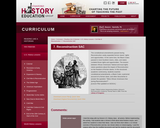
(Taken directly from website)
The constitutional amendments passed during Reconstruction vastly expanded former slaves' rights and opportunities. At the same time, the Black Codes passed in most Southern towns, cities, and states curtailed those rights and opportunities. The tension between African Americans' federal and local rights raises questions about the impact of Reconstruction on the freedom of former slaves. In this structured academic controversy, students examine constitutional amendments, a Black Code, a personal account of a former slave, and other documents to answer the question: “Were African Americans free during Reconstruction?"
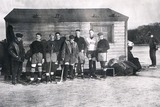
A look at Wisconsin's lakes and recreational activities.
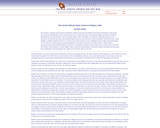
The Senecas, members of the Iroquois Confederacy, fought on the side of the British in the American Revolution. Red Jacket, also known as Sagoyewatha, was a chief and orator born in eastern New York; he derived his English name from his habit of wearing many red coats provided to him by his British allies. After the hostilities, as the British ceded their territories to the Americans, the Senecas and many other Indian peoples faced enormous pressure on their homelands. Red Jacket was a critical mediator in relations between the new U.S. government and the Senecas; he led a delegation that met with George Washington in 1792, when he received a peace medal that appeared in subsequent portraits of the Indian leader. In 1805 a Boston missionary society requested Red Jacket's permission to proselytize among the Iroquois settlements in northern New York State. Red Jacket's forceful defense of native religion, below, caused the representative to refuse the Indian's handshake and announce that no fellowship could exist between the religion of God and the works of the Devil.

The Birth of a Nation, which opened in March 1915, was simultaneously a landmark in the history of American cinema and a landmark in American racism. The film depicted the South, following the assassination of President Lincoln, as ruled by rapacious African Americans, who by the film's end were heroically overthrown from power by the Ku Klux Klan. The National Association for the Advancement of Colored People (NAACP) attempted to mount boycott of the film, but it failed to stir significant white opposition. Ten days after Birth opened in New York City, noted reformer and NAACP board member Jane Addams (founder of Hull House, the Chicago settlement house) was interviewed by the New York Post about the film. Though Addams abhorred the film's portrayal of African Americans, she nonetheless conceded--perhaps intimidated by director D.W. Griffith's unrelenting efforts to cloak the film in the mantle of historical "accuracy"--that "some of the elements of the plot are based on actual events." This statement suggested how deeply the pro-Southern interpretation of Reconstruction had permeated popular understanding of that history, and Griffith was able to cite contemporary academic historians to support this view.
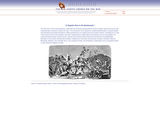
The 1841 issue of the Crockett Almanac, named after the Tennessee backwoodsman, Davey Crockett, made famous by his self-serving tall tales, portrayed a rough rural sport." The inexpensive comic almanacs combined illustrated jokes on topical subjects with astrological and weather predictions. While presented here as a rllicking free-for-all
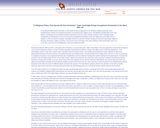
In the decades following the Revolution, a vast variety of choices appeared on the American religious landscape as an anti-authoritarian climate encouraged the formation of new democratic religious sects. The Baptists and Methodists were most adept in preaching to the new populist audience during these years of camp meeting revivalism. Peter Cartwright greatly contributed to the Methodists' success at introducing evangelical Protestantism to the new settlements of the West. Born in Virginia in 1785 and raised in Kentucky, Cartwright served as an itinerant minister bringing his version of enthusiastic religion to Kentucky, Tennessee, Indiana, and Ohio. This account of his conversion in the camp meeting of 1801 and his later career as a circuit rider comes from his autobiography, which was published in 1856.